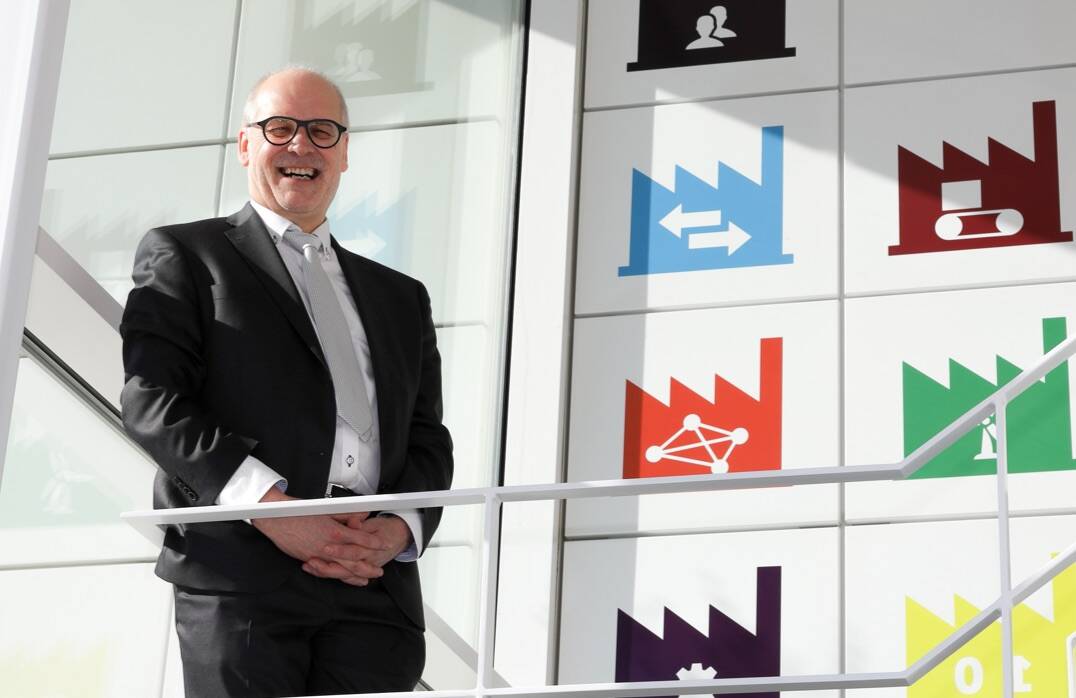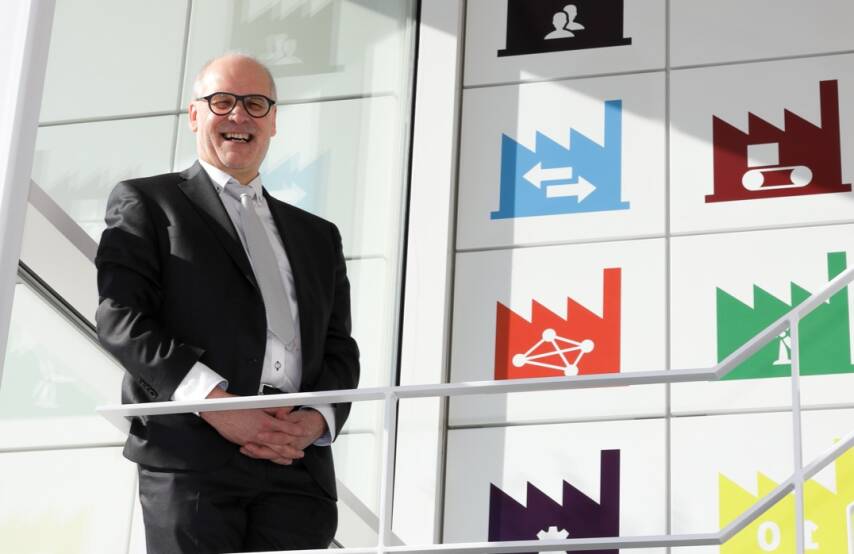
To Jan Robrechts (Lavetan), the role of the employees is an important area of reflection. “One of the main challenges for the coming years: how do we build the digital organisation around our people and give them a sustainable place within it? Incidentally, this question is not new: ten years ago, it already gave rise to the launch of self-steering teams.
In retrospect, we started this process much too soon. In the middle of the automation phase, people simply had far too little information and insight to steer themselves properly. However, self-steering is now beginning to bear fruit in the form of greater involvement and motivation.”
Part 3
Human-centered digital transformation
A sustainable place for people in a digital factory
People are therefore needed to ensure successful digitisation. But what does the future hold? Will new technologies and automation push people into a supporting role? Or worse still, make them superfluous in the long term? The answer is unambiguous: people will play a central role in the factory of the future.
Tasks with added value
Materialise is already using new technologies to eliminate certain human tasks. Bart Van der Schueren: “We created a Machine Learning algorithm for dentistry. This uses AI to recognise and categorise certain implants, such as crowns and bridges. This cuts out a human step in the production of these implants. We are therefore still focusing on new technologies that will make production more efficient and intelligent.
But make no mistake: people will always be at the heart of things. Tasks with a high cost and little added value will be replaced by machines and automation. This will allow people to devote themselves fully to tasks that offer added value.”
Maar wat leveren die data nu concreet op? De tweede horde die maakbedrijven nemen, is die data op een overzichtelijke en efficiënte manier aan de medewerkers presenteren.
Guy De Winne (ST Engineering): “De voorbije jaren verzamelden we heel wat data, maar die zat verspreid over verschillende databases, zowel vanuit de productie en machines als uit de ondersteunende diensten. We wilden ervoor zorgen dat alle informatie gecentraliseerd werd in één datacube met verschillende views. Zodat elke medewerker vlot de juiste informatie voor zijn functie uit die centrale database kan halen.”
Tasks with a high cost and little added value will be replaced by machines and automation.”


How do we build the digital organisation around our people and give them a sustainable place within it?”

not a ‘Lights Out Factory’
Pepijn Verhaeghe (Vandemoortele) does not believe that people will disappear from factories either. “Some people claim that digitisation and automation will lead to the Lights Out Factory, where products roll off the belt with no human intervention whatsoever. Nothing could be further from the truth: in fact, people will be at the heart of this digitised working environment.
The smart factory will not bombard people with information, but will pass on the right data to the right employees at the right time. They will keep the work on the right track and focus on fine-tuning the processes. The result: even higher quality and peace of mind for the client.”
Part 3 – Human-centred digital transformation

A sustainable place

Tasks with added value
Not a ‘Lights Out Factory’


Part 3
Human-centered digital transformation
People are therefore needed to ensure successful digitisation. But what does the future hold? Will new technologies and automation push people into a supporting role? Or worse still, make them superfluous in the long term? The answer is unambiguous: people will play a central role in the factory of the future.
A sustainable place for people in a digital factory
To Jan Robrechts (Lavetan), the role of the employees is an important area of reflection. “One of the main challenges for the coming years: how do we build the digital organisation around our people and give them a sustainable place within it? Incidentally, this question is not new: ten years ago, it already gave rise to the launch of self-steering teams.
In retrospect, we started this process much too soon. In the middle of the automation phase, people simply had far too little information and insight to steer themselves properly. However, self-steering is now beginning to bear fruit in the form of greater involvement and motivation.”

How do we build the digital organisation around our people and give them a sustainable place within it?”

Materialise is already using new technologies to eliminate certain human tasks. Bart Van der Schueren: “We created a Machine Learning algorithm for dentistry. This uses AI to recognise and categorise certain implants, such as crowns and bridges. This cuts out a human step in the production of these implants. We are therefore still focusing on new technologies that will make production more efficient and intelligent.
But make no mistake: people will always be at the heart of things. Tasks with a high cost and little added value will be replaced by machines and automation. This will allow people to devote themselves fully to tasks that offer added value.”
Tasks with a high cost and little added value will be replaced by machines and automation.”

Tasks with added value
not a ‘Lights Out Factory’
Pepijn Verhaeghe (Vandemoortele) does not believe that people will disappear from factories either. “Some people claim that digitisation and automation will lead to the Lights Out Factory, where products roll off the belt with no human intervention whatsoever. Nothing could be further from the truth: in fact, people will be at the heart of this digitised working environment.
The smart factory will not bombard people with information, but will pass on the right data to the right employees at the right time. They will keep the work on the right track and focus on fine-tuning the processes. The result: even higher quality and peace of mind for the client.”


